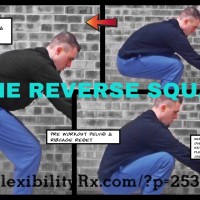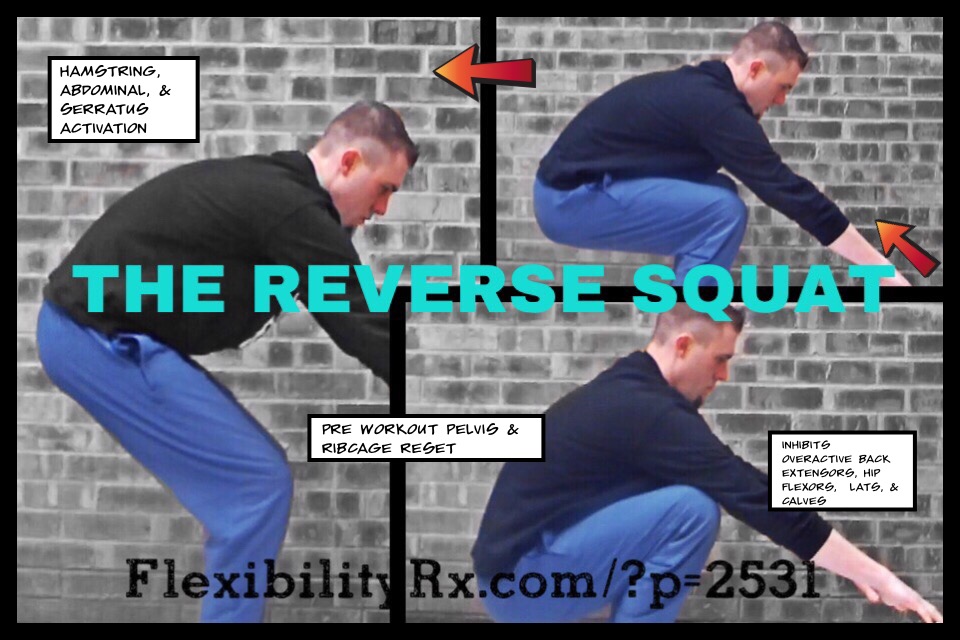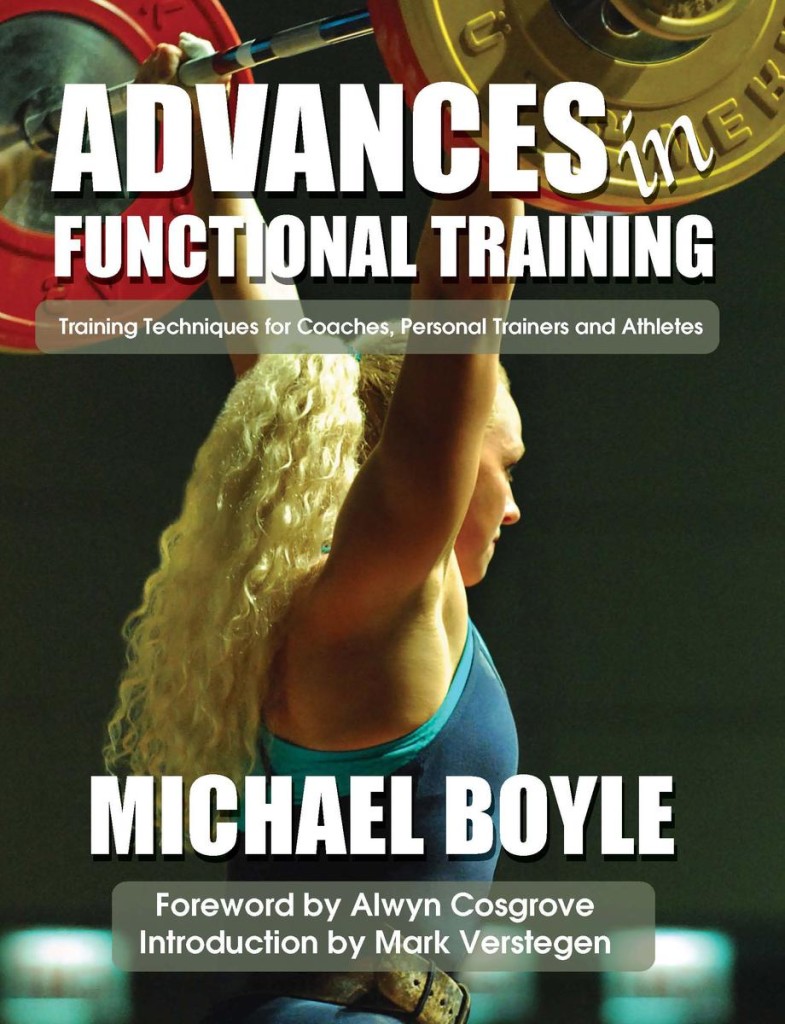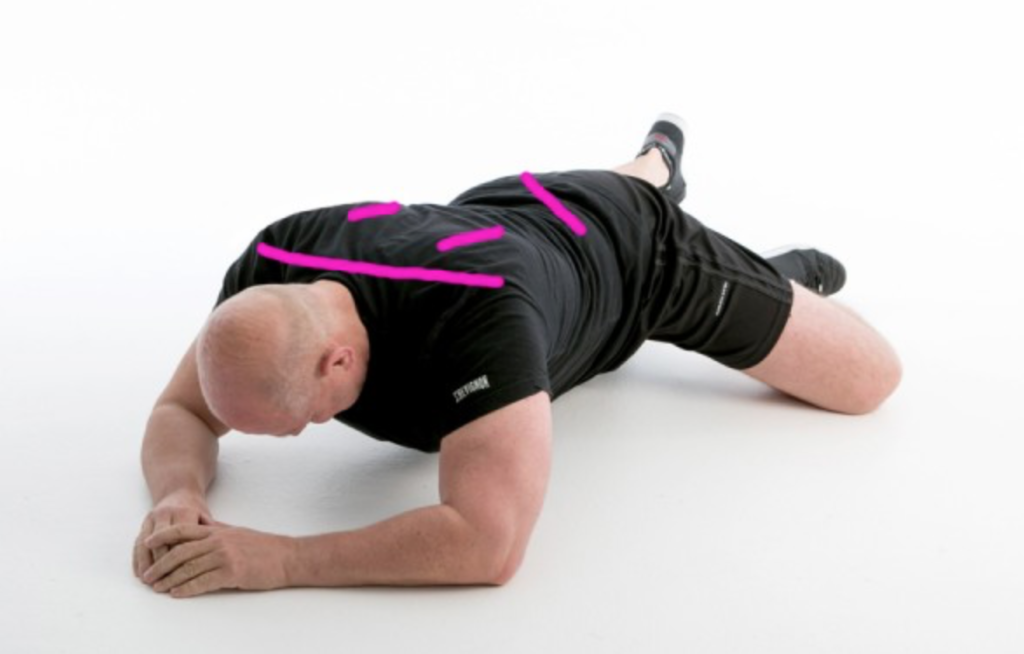
Tuesday: Fitness Do’s (The Reverse Squat)

A common mistake that is made is assuming that someone can get into position for their lift. Cueing someone during the squat can help their movement If they have the stabilization requirement and mobility for that movement. If they don’t then that same cue will not have the same effect.
The reverse squat is a reset for the pelvis and ribcage. It is a neurological reset of muscles that are often overactive and contribute to a pattern of overextension.
There is a reason why other countries whose population regularly squat (ass to grass) while eating or during other activities (going to the bathroom) have lower incidences of low back pain.
There is a big difference between a third world squat and squatting in the gym.The reverse squat is done without load. Squatting with a barbell has many benefits. However, there are a lot of risk factors involved in a loaded barbell squat.
Training unilateral movements, using kettlebells, clubs, ropes, and using other equipment that allow the body to alternate and reciprocate outside of the sagittal plane is the safest route to increased fitness. Mike Boyle talks about this in his book, “Advances in Functional Training.”
I, myself incorporate barbell squats into my routine. I enjoyed my time training Olympic Weightlifting at East Valley CrossFit in Chandler, AZ. However, the mobility problems most athletes face arise from excessive training of bilateral movements in the sagittal plane.
My prior article, “Reclaiming the Sagittal Plane” discussed the need to reset the sagittal plane. Training time spent in the gym needs to prioritize the frontal plane. Side to side movements keep us balanced so that we can rotate through the transverse plane.
The Postural Restoration Institute talks a lot about the frontal plane in their Advanced Integration course. Many initial PRI exercises (like reverse squatting) focus on first inhibiting overactive muscles in the sagittal plane.
https://performancecondition.com/wp-content/uploads/2012/04/T4-10-Considerations-of-Strength-Developmetn-Part-1.pdf
How to Utilize Reverse Squatting
At first glance this exercise looks like poor posture, bad squat form and the last exercise that you would want to be doing in the gym. But if you understand how this exercise is utilized you will be much more prepared for your lifts that involve extension, bracing, and maintenance of an upright posture.
The key to this exercise is keeping weight on your heels and engaging your hamstrings to pull yourself up. This posteriorly tilts the pelvis while internally rotating the ribcage. The reach activates the serratus anterior to stabilize the ribcage. Sense your heels instead of just looking at the ground.
Athletes with anterior pelvic tilt and ribcage flair should consider a barbell back squat the last exercise to perform in the gym. However, 10 slow reps of this quick reset will better prepare athletes for squatting and deadlifting.
You can also hold the bottom position for 4-5 breaths and focus on breathing into the space between your shoulder blades. This area is referred to as the posterior mediastinum. When the ribcage flairs this area becomes compressed and will limit thoracic rotation.
I would then follow this inhibition exercise up with a stabilization exercise that raises the level of muscle activation needed to maintain a neutral spine.
The Prague School of Rehabilitation provides many good options to achieve this goal. I often intermix PRI and DNS exercises using sagittal plane PRI exercises with athletes that need more inhibition initially. I then prioritize frontal plane control using PRI exercises that allow an athlete to alternate between sides. I then use a variety of DNS exercises that increase the requirement of stabilization and con-contraction of muscles.
Here is a good follow-up to reverse squatting, courtesy of DNS practitioner Hans Lindgren…
http://www.hanslindgren.com/blog/dns-plank/
You can find full instructions on reverse squatting here:
https://www.posturalrestoration.com/_resources/e30d:mpdida-3n/files/1061888z172b866a/_fn/Reverse_Squat_1.pdf
– Kevin J. Kula, “The Flexibility Coach”


Leave A Reply (No comments so far)
You must be logged in to post a comment.
No comments yet